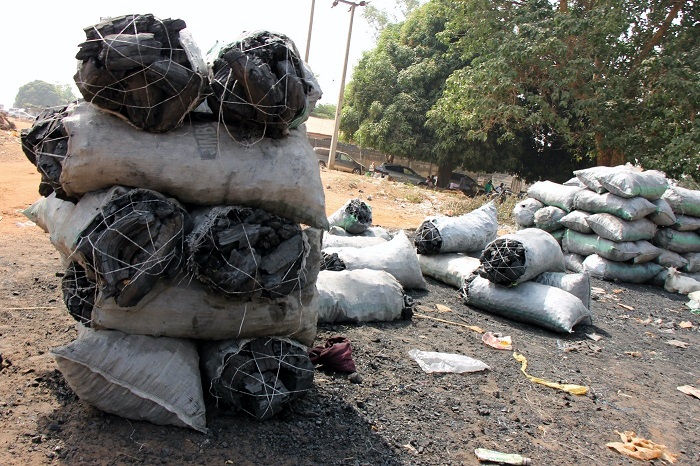BLOG
Does Allstate Home Insurance Cover Plumbing?

Plumbing issues can strike without warning—burst pipes, water leaks, or a flooded basement can cause significant damage to your home and finances. If you’re an Allstate policyholder, you might be asking: Does Allstate home insurance cover plumbing? The short answer is yes, but with important limitations and conditions. In this comprehensive guide, we’ll dissect the extent of Allstate’s plumbing coverage, what’s excluded, and how to ensure you’re fully protected against unexpected plumbing mishaps.
What to Know About Homeowners Insurance Basics
Before diving into plumbing specifics, it’s essential to understand what a standard homeowners insurance policy generally covers. Allstate, like most major insurers, provides home insurance that includes:
-
Dwelling coverage (your house structure)
-
Personal property (items inside your home)
-
Liability protection
-
Additional living expenses (ALE) if you’re displaced
Most homeowners policies cover sudden and accidental damages, but not routine maintenance or gradual wear and tear.
When Allstate Covers Plumbing Damage
Allstate homeowners insurance typically covers plumbing damage under certain scenarios. Below are key examples where plumbing-related issues may be covered:
1. Burst Pipes
This is one of the most common plumbing disasters. If a pipe suddenly bursts due to freezing temperatures or pressure buildup, Allstate usually covers:
-
The resulting water damage to floors, walls, or personal belongings
-
The cost to tear out and replace walls to access the burst pipe
Example: If a frozen pipe bursts in your kitchen and floods the room, Allstate may cover both the water damage and necessary drywall repairs.
2. Accidental Discharge or Overflow
Water discharge from a plumbing system, air conditioner, or appliance like a washing machine that happens accidentally and suddenly may be covered. However, the source of the leak is often not covered.
Note: Insurance typically pays for the cleanup and repairs, not replacing the broken appliance or fixture.
3. Water Damage After Firefighting
If a fire occurs and firefighters cause water damage while extinguishing flames, that is generally covered—indirectly linking plumbing and water damage.
4. Mold Resulting from Covered Water Damage
If mold forms due to a covered water damage incident, such as a burst pipe, Allstate might cover it—but usually with limits. Mold remediation often requires a separate rider or endorsement.
Plumbing Issues NOT Covered by Allstate
Despite the protections, there are important exclusions to Allstate’s standard home insurance regarding plumbing:
1. Wear and Tear or Neglect
If your plumbing system is outdated or you fail to maintain it, Allstate is unlikely to cover any resulting damage.
⚠️ Example: If a 30-year-old corroded pipe leaks slowly over time, the insurer will likely deny the claim as a maintenance issue.
2. Sewer Backup and Sump Pump Failure
These are not included in standard coverage. You must purchase optional sewer backup coverage.
💡 Visit Allstate’s official optional coverages page to learn more about add-ons like sewer backup.
3. Slow Leaks or Gradual Damage
If water damage occurs over time, such as from a hidden leak behind a wall or under a sink, Allstate may deny the claim unless it resulted in sudden damage.
4. Damage from Flooding
Floods caused by external sources like heavy rain or storm surges are not covered. You’ll need a separate flood insurance policy from the National Flood Insurance Program (NFIP).
Does Allstate Pay to Repair or Replace Plumbing?
Here’s where many policyholders get confused. While Allstate often pays for consequential damage caused by plumbing problems, it usually does not pay to repair or replace the faulty plumbing itself.
For instance:
-
If a pipe bursts, they’ll cover the damage caused by the water.
-
They will not cover the replacement of the faulty pipe unless it’s a covered peril (e.g., fire).
Always review your Declaration Page or speak with your Allstate agent to confirm.
Optional Add-Ons to Enhance Plumbing Coverage
Allstate offers policy endorsements and optional coverages that can strengthen your protection against plumbing-related disasters:
1. Water Backup Coverage
This is crucial for homeowners with basements. It covers damage from:
-
Backed-up drains or sewer lines
-
Failed sump pumps
2. Equipment Breakdown Coverage
This covers major home systems, such as:
-
HVAC
-
Water heaters
-
Boilers
-
Plumbing systems (for mechanical breakdowns)
🔗 Explore Allstate’s Equipment Breakdown Coverage for details.
3. Home Warranty
Allstate partners with companies like SquareTrade to offer extended appliance and system warranties, which may cover:
-
Plumbing repairs
-
Fixture replacement
-
Routine wear and tear
How to File a Plumbing Damage Claim with Allstate
Here’s a step-by-step guide to ensure you handle plumbing disasters the right way and maximize your claim outcome:
Step 1: Stop the Water Source
Immediately shut off the main water valve to prevent further damage.
Step 2: Document Everything
Take clear photos and videos of:
-
The water damage
-
Affected property
-
The plumbing source, if identifiable
Step 3: Call a Licensed Plumber
Have a professional assess the situation and write a detailed report. You may need this when filing the claim.
Step 4: Contact Allstate
You can file a claim through:
-
Allstate mobile app
-
Customer service: 1-800-ALLSTATE
Step 5: Meet with the Adjuster
An Allstate adjuster will evaluate the damage. Provide receipts, photos, and the plumber’s report.
💬 Expert Tip: Know Your Policy Inside-Out
Your insurance declarations page outlines your coverage limits, deductibles, and endorsements. Read this thoroughly. Ask your Allstate agent:
-
Does my policy include mold remediation?
-
Am I protected against sewer backups?
-
Can I add equipment breakdown coverage?
This helps avoid costly surprises when disaster strikes.
Real-Life Examples: When Allstate Paid (or Didn’t)
✅ Covered Case
“A pipe burst in my attic during a cold snap. Allstate covered the water damage to the ceiling and walls, and even helped cover my hotel stay while repairs were ongoing.” — Verified Reddit user
❌ Denied Claim
“Our bathroom sink had a slow leak for months we didn’t notice. Mold formed and Allstate said the leak was due to neglect and not a ‘sudden incident,’ so they denied the claim.” — ConsumerAffairs review
Compare with Other Insurers
Here’s how Allstate stacks up against competitors for plumbing-related claims:
| Feature | Allstate | State Farm | Progressive | Liberty Mutual |
|---|---|---|---|---|
| Burst Pipe Damage | ✅ Yes | ✅ Yes | ✅ Yes | ✅ Yes |
| Slow Leak Coverage | ❌ No | ❌ No | ❌ No | ❌ No |
| Mold Remediation (Optional) | ⚠️ Limited | ✅ With Endorsement | ⚠️ Limited | ✅ With Endorsement |
| Sewer Backup (Optional Add-on) | ✅ Yes | ✅ Yes | ✅ Yes | ✅ Yes |
| Equipment Breakdown Coverage | ✅ Yes | ✅ Yes | ❌ No | ✅ Yes |
Conclusion: Be Proactive, Not Reactive
While Allstate home insurance covers sudden and accidental plumbing damages, it’s not a maintenance policy. Most plumbing exclusions arise from neglect or failure to act quickly. To avoid being stuck with a denied claim:
-
Schedule regular plumbing inspections
-
Add optional sewer and equipment coverage
-
Know your policy’s fine print
For the best protection, consider customizing your Allstate policy with enhanced endorsements.
💬 Still wondering, “Does Allstate home insurance cover plumbing?” The answer is yes—for sudden incidents. But for everything else, it’s on you to plan ahead.
Discover more from Asiwaju Media
Subscribe to get the latest posts sent to your email.
-

 ENTERTAINMENT7 days ago
ENTERTAINMENT7 days agoFrank Edoho Confirms Split From Second Wife Sandra Onyenuchenuya
-

 NEWS7 days ago
NEWS7 days agoMan Heartbroken As Girlfriend Of 2 Years Denies Him During Interview With YouTuber Asherkine At UNN
-

 POLITICS5 days ago
POLITICS5 days agoChristian Asaga Nwali Bags Award for Contributions to Community Development
-

 ENTERTAINMENT7 days ago
ENTERTAINMENT7 days agoNollywood Mourns As Actor And Producer Kayode Peters Reportedly Passes Away In Canada
-

 ENTERTAINMENT2 days ago
ENTERTAINMENT2 days agoShocking! Davido Accused of Secret Dealings That Could Ruin His Career
-

 ENTERTAINMENT7 days ago
ENTERTAINMENT7 days agoUNN Student Becky Breaks Silence, Denies Claims Of Boyfriend Denial After Viral Outing With Asherkine
-

 POLITICS6 days ago
POLITICS6 days agoSenator George Akume Resigns as Secretary to the Government of the Federation
-

 SPORTS6 days ago
SPORTS6 days agoAfonja Warriors Spice Up the Final, Leave Rice Boys with an Empty Bowl
-

 CAMPUS REPORTS6 days ago
CAMPUS REPORTS6 days agoKaduna, SMEDAN Launch ₦1 Billion Fund to Power Small Business Growth
-

 INSIDE NYSC6 days ago
INSIDE NYSC6 days agoOba Elegushi Graces NYSC Cultural Carnival in Lagos, Platoon 4 Emerges Winner
-

 JOBS/SCHOLARSHIPS3 days ago
JOBS/SCHOLARSHIPS3 days agoCall For Applications: SEEDINVEST Acceleration Program For Nigerian Entrepreneurs (Up to N5 Million in Asset Grants + 6-week online Training)
-

 NEWS2 days ago
NEWS2 days agoPlateau Assembly Elects Nanloong Daniel as Speaker After Dewan’s Resignation






















